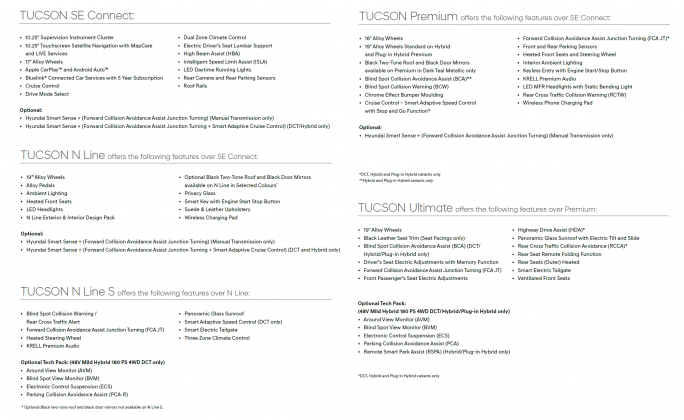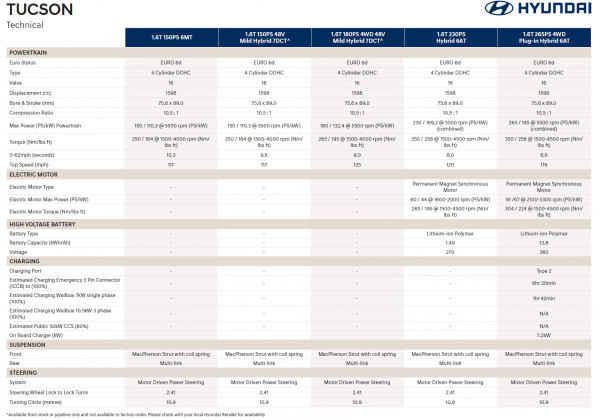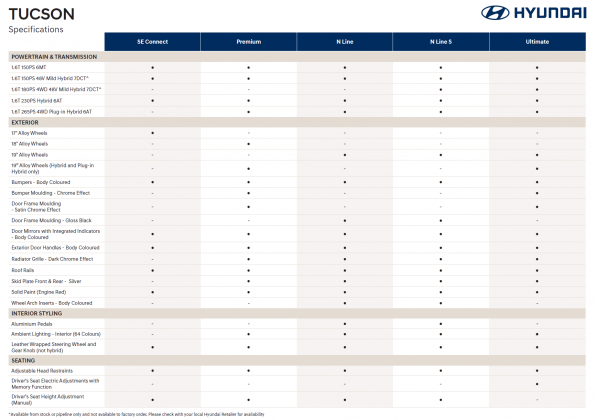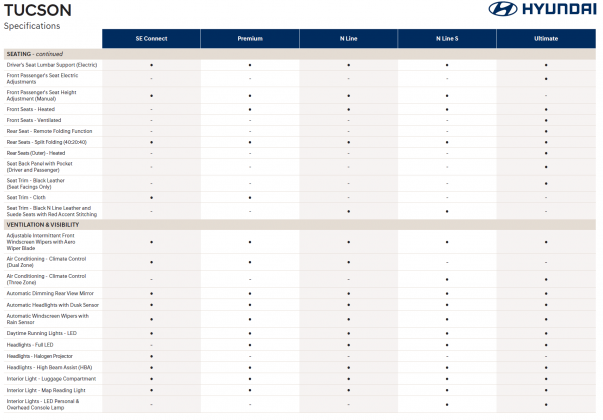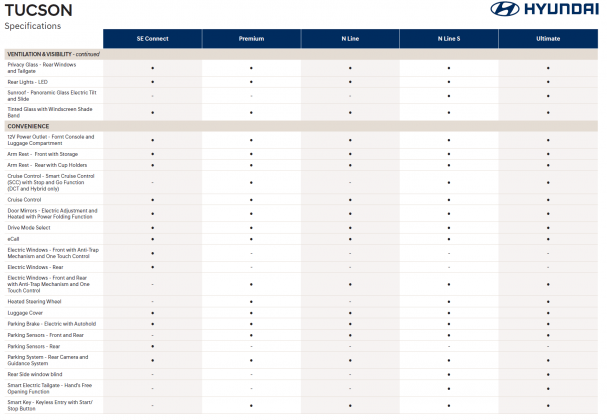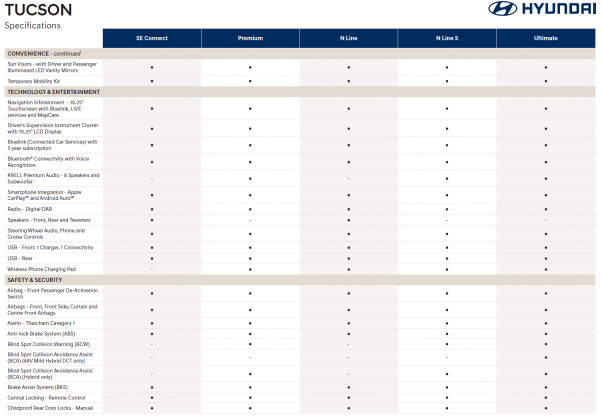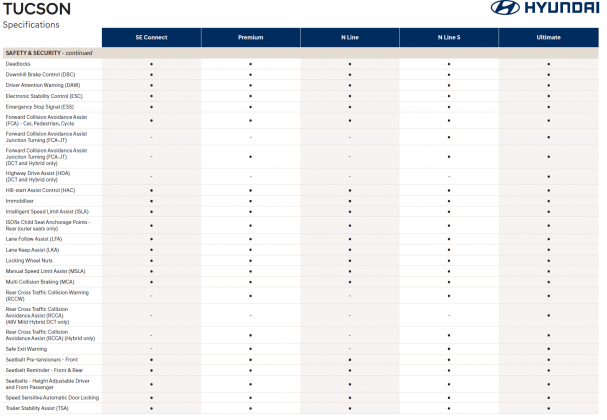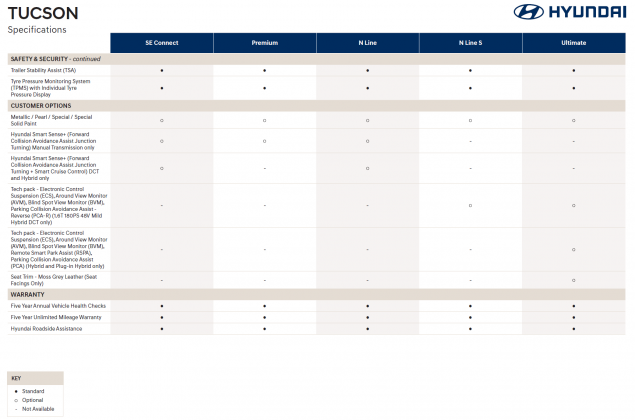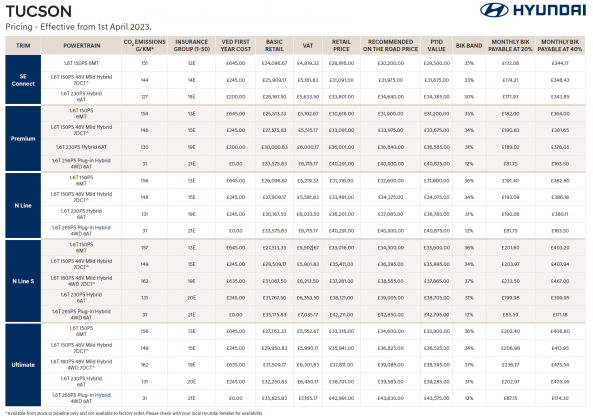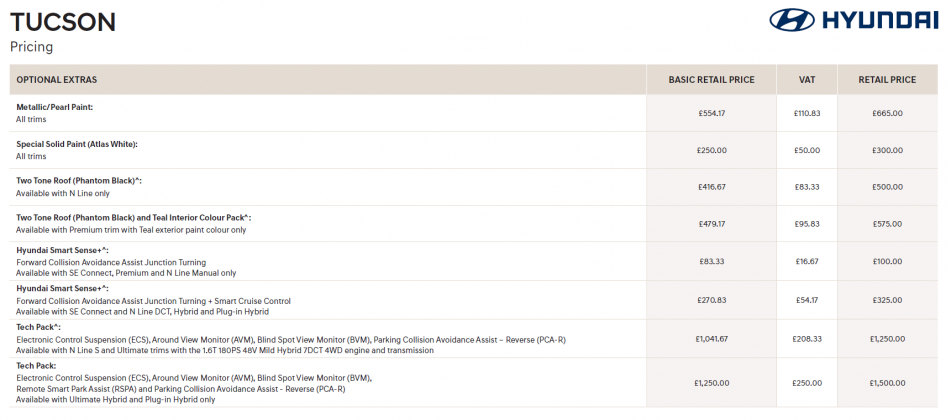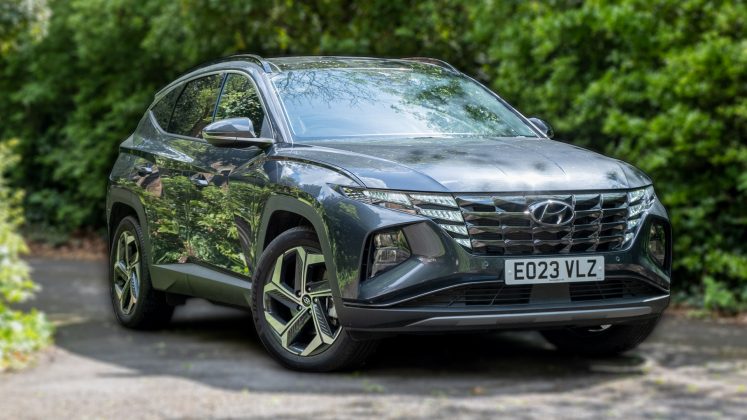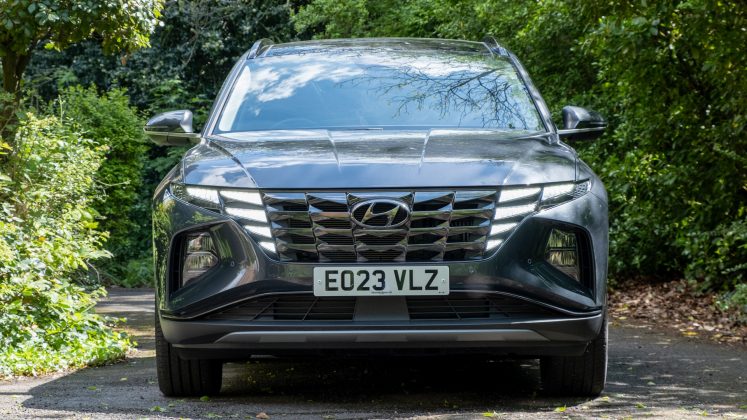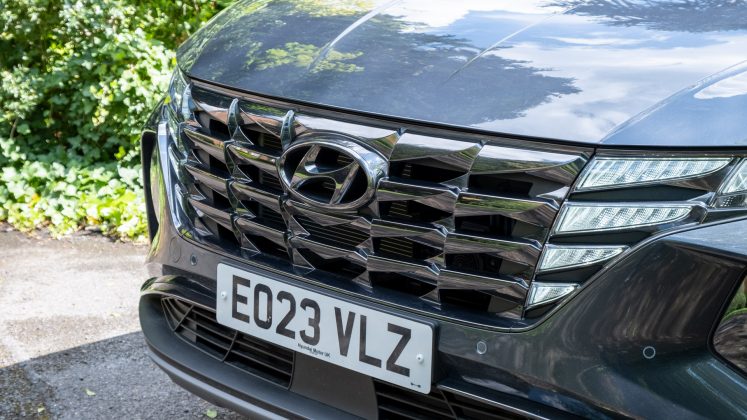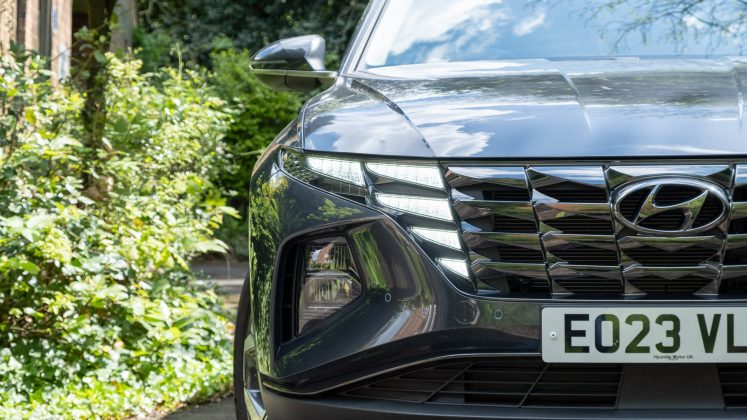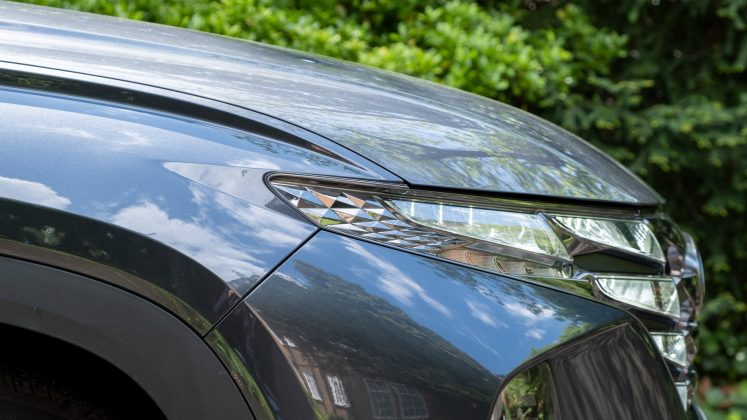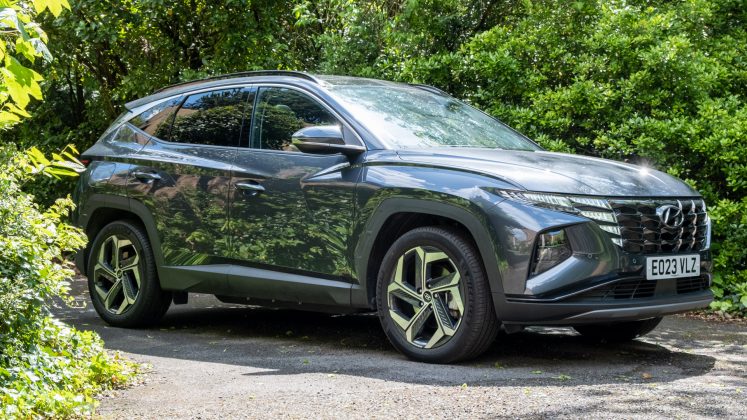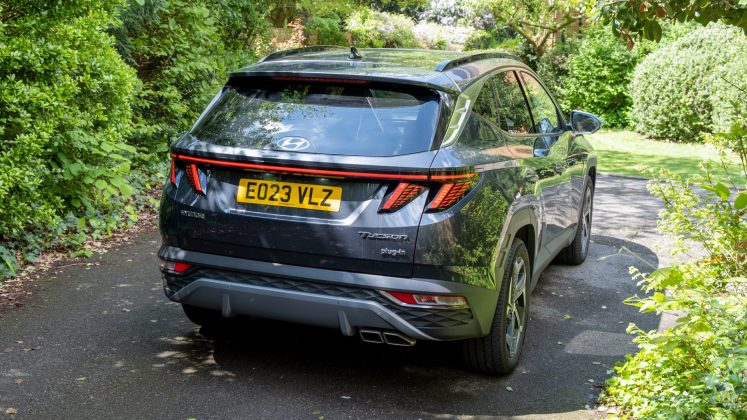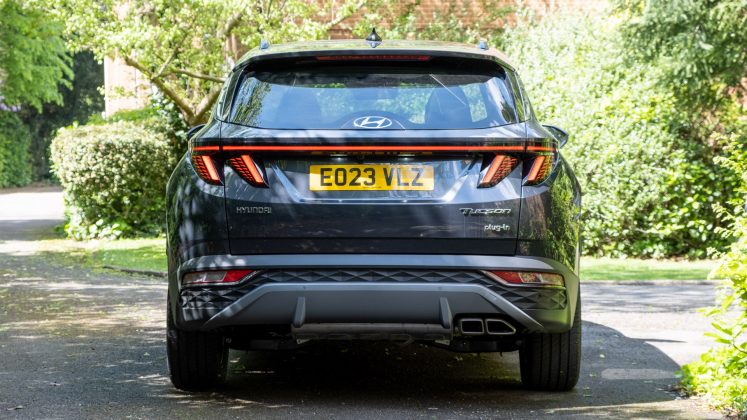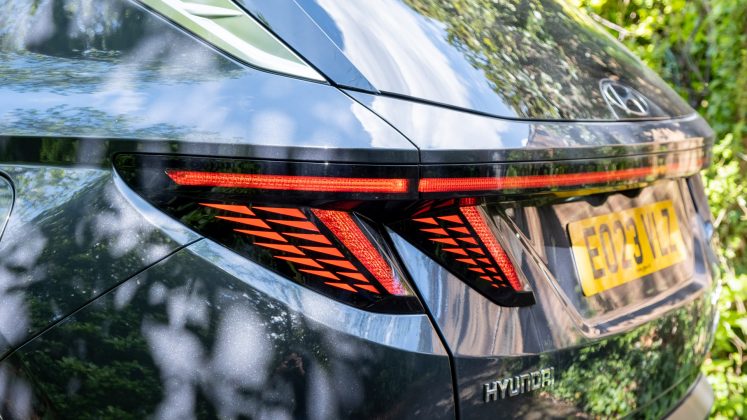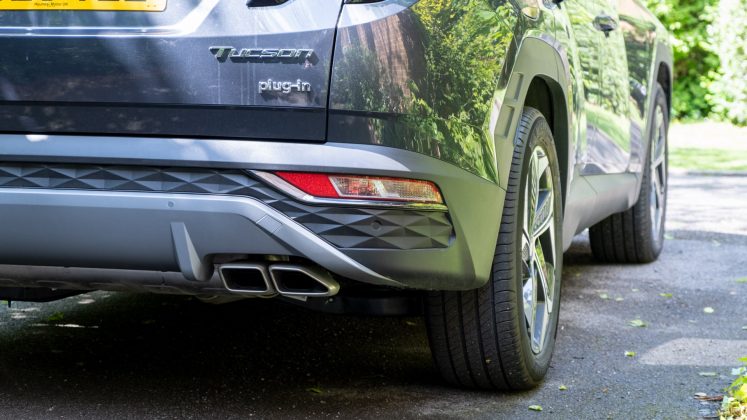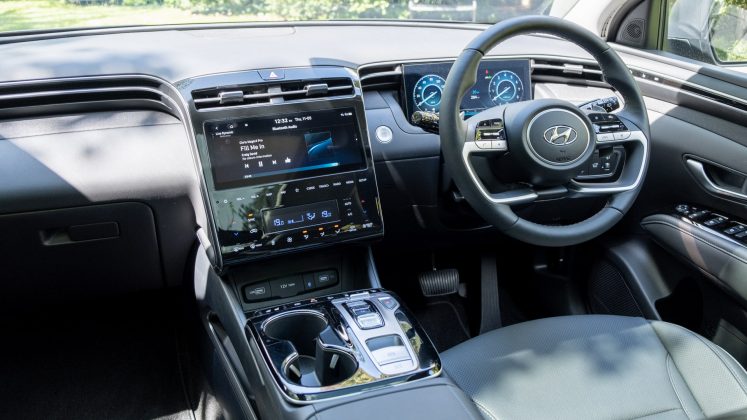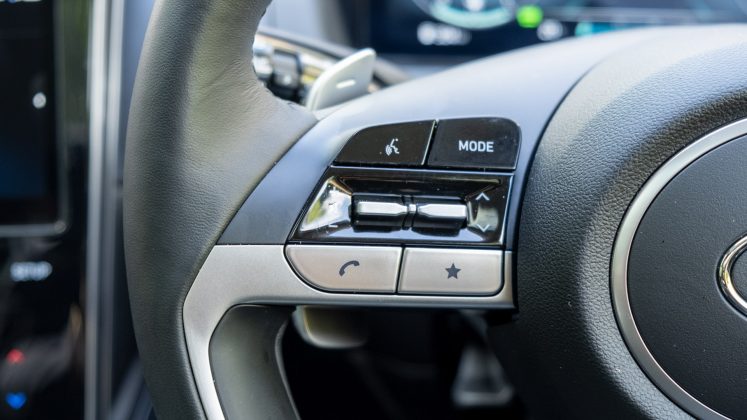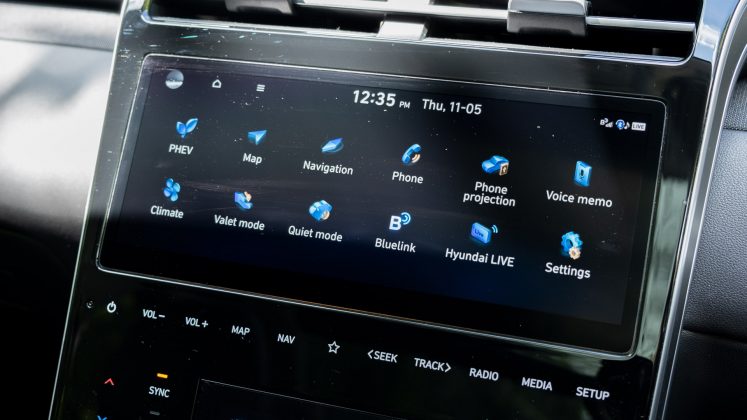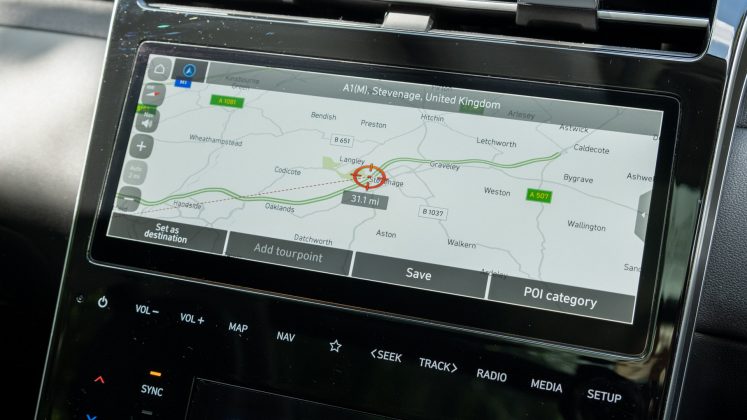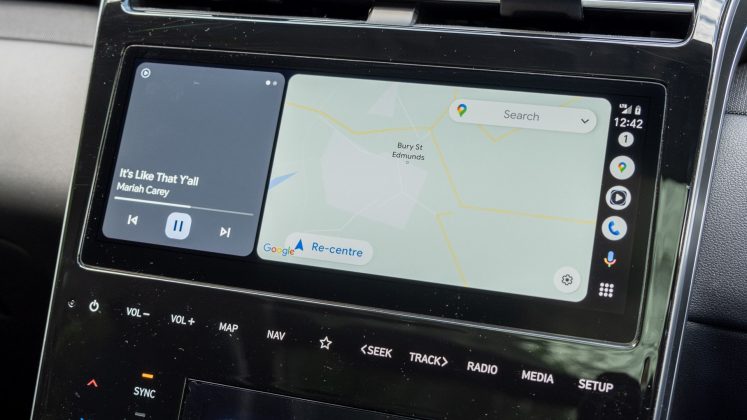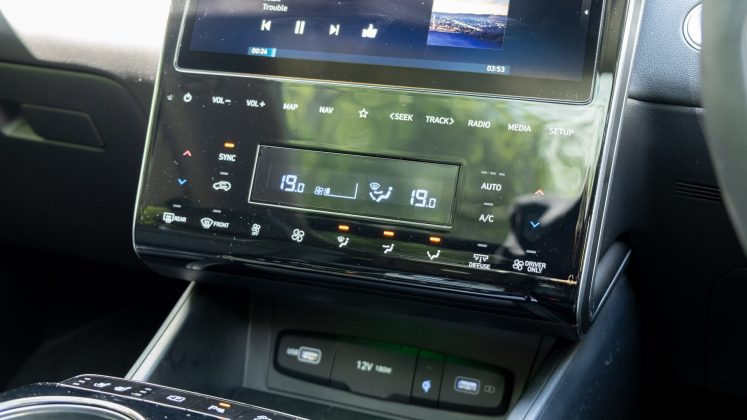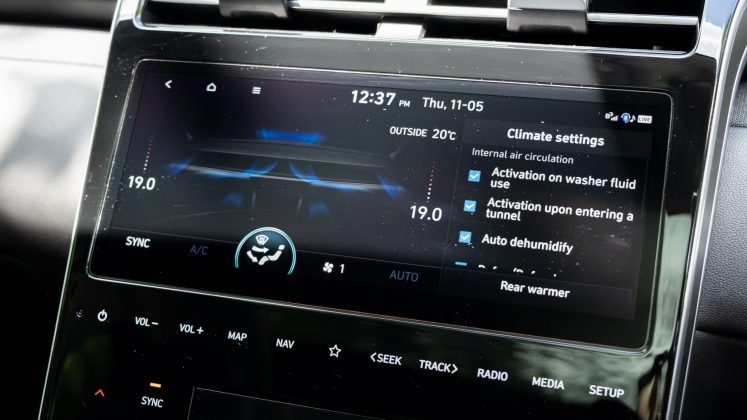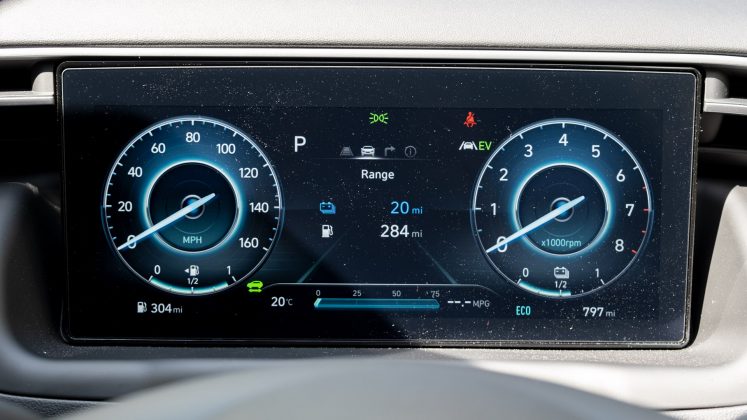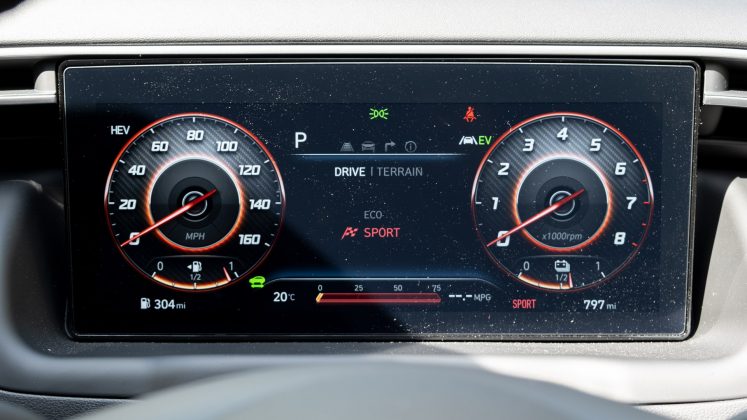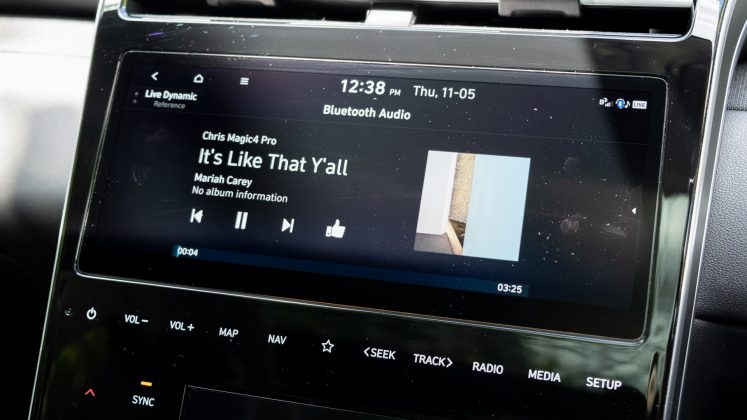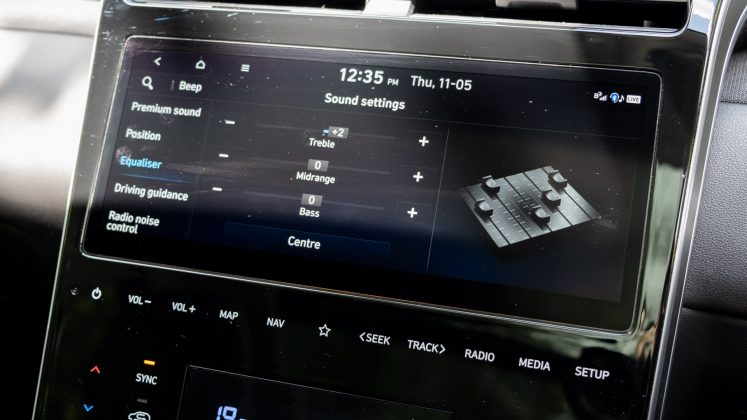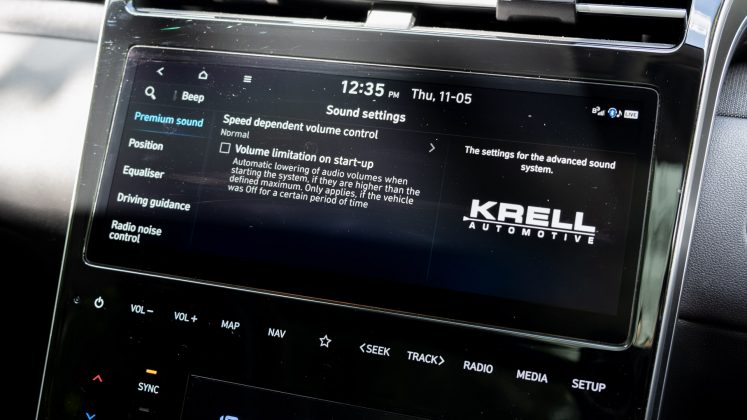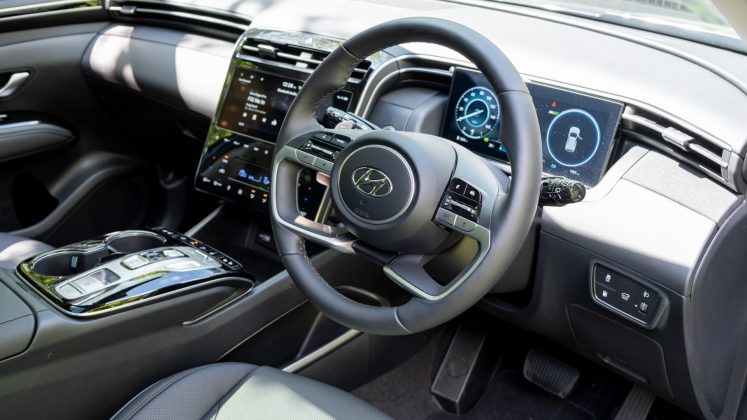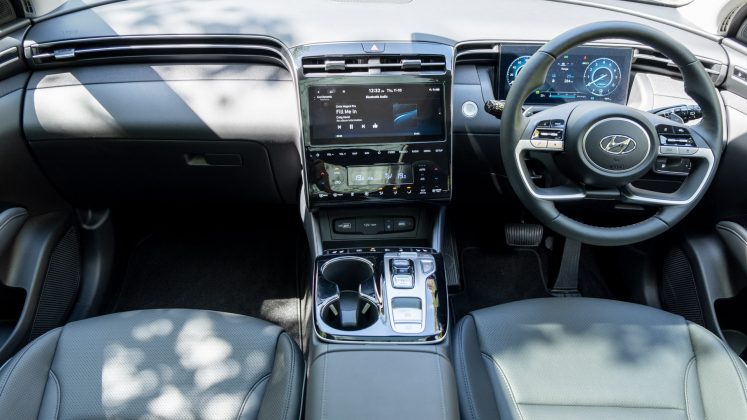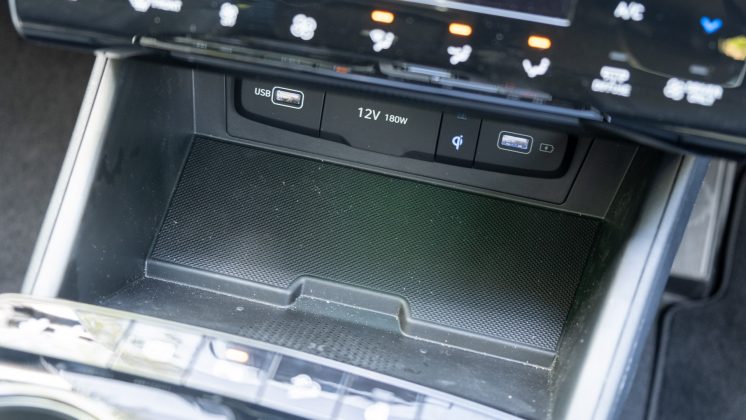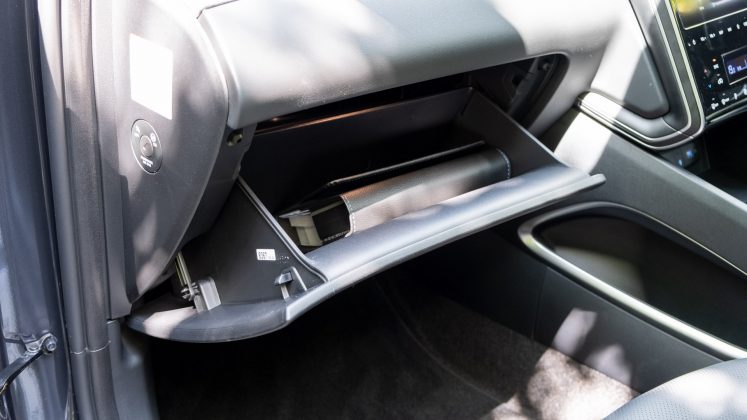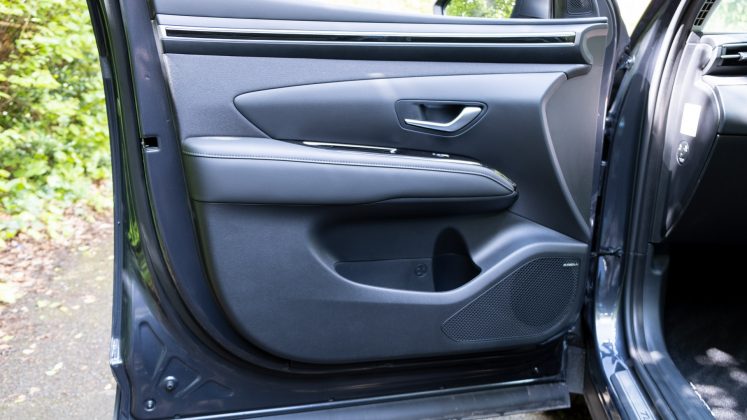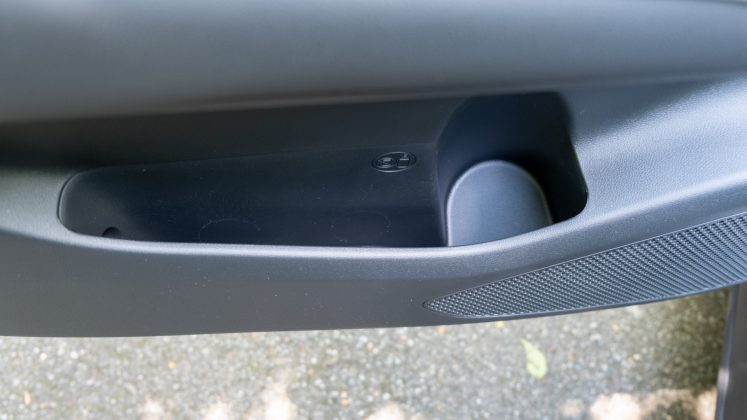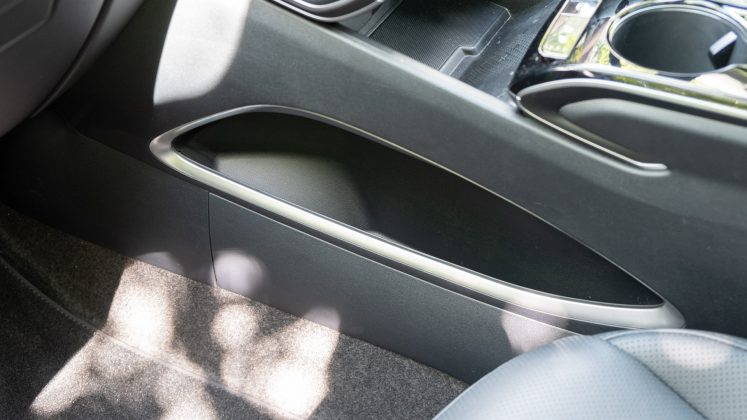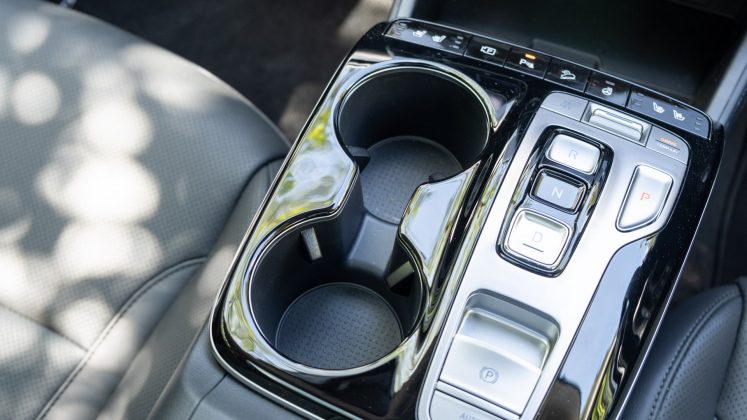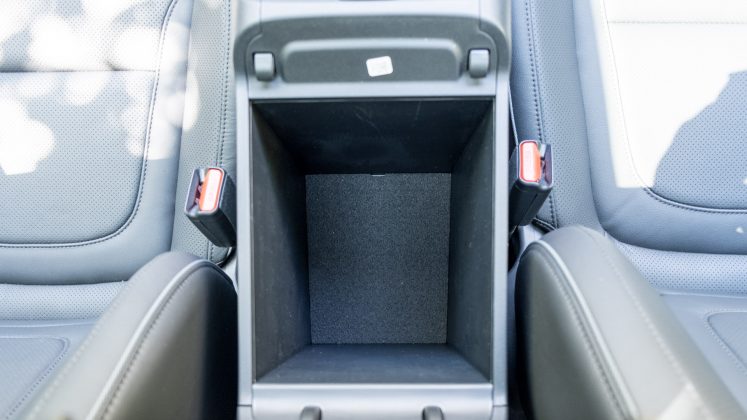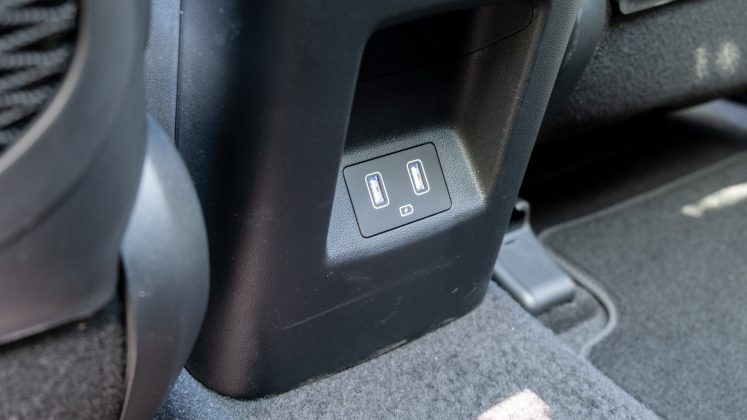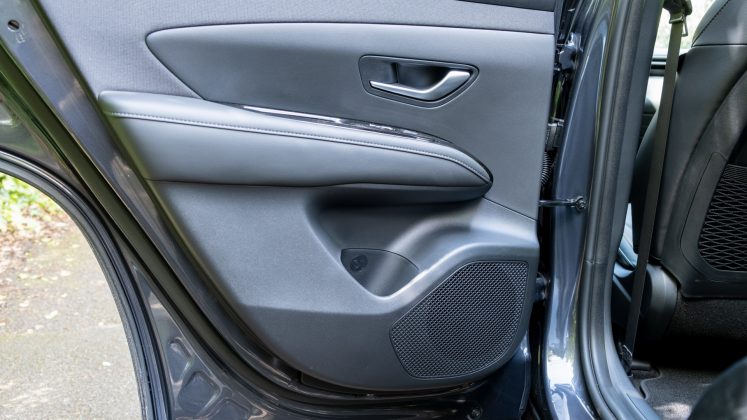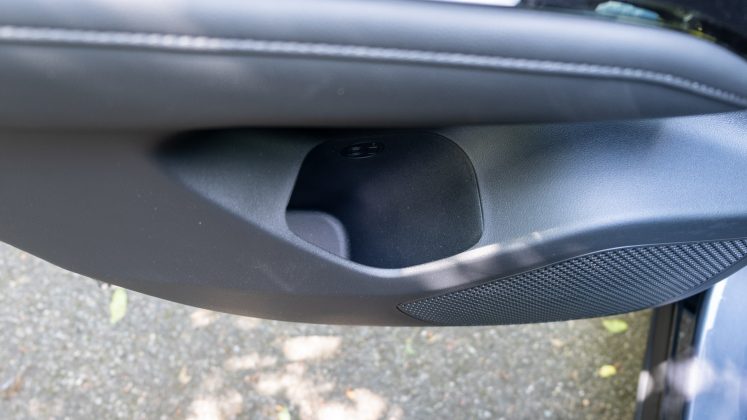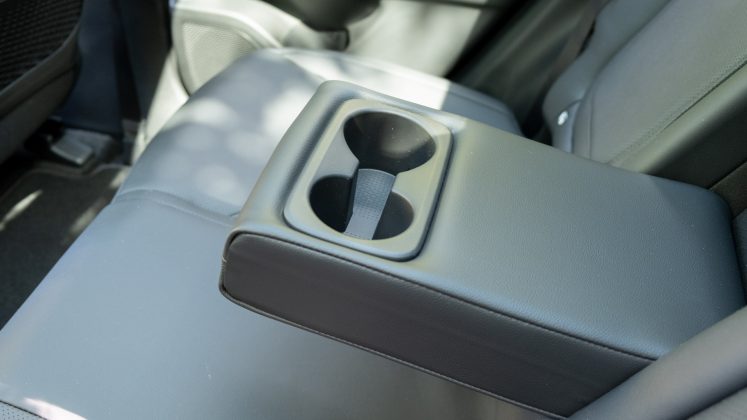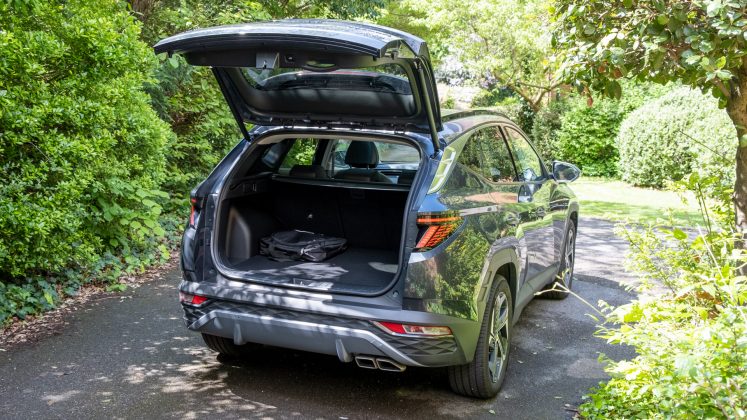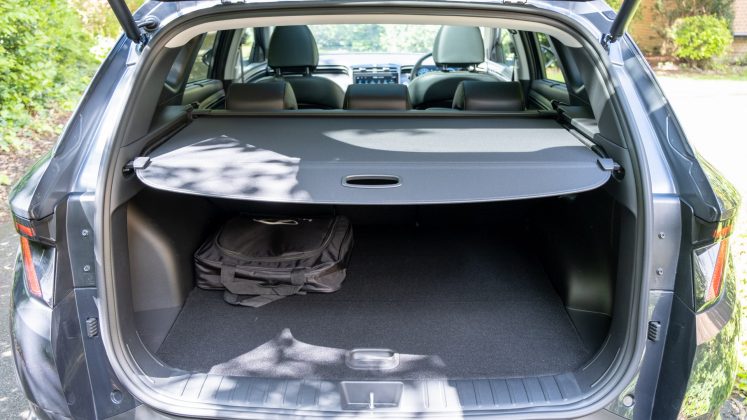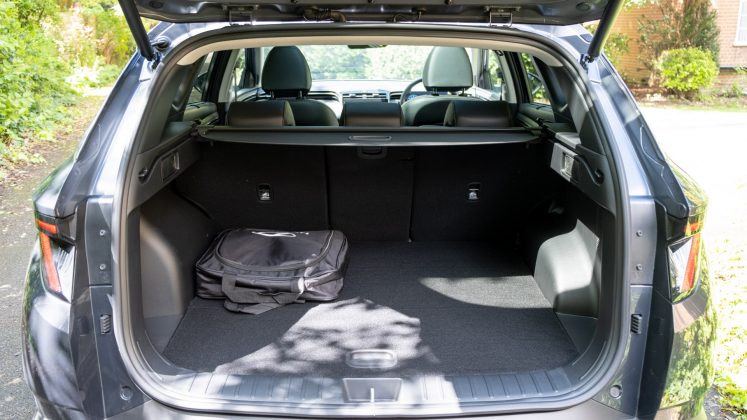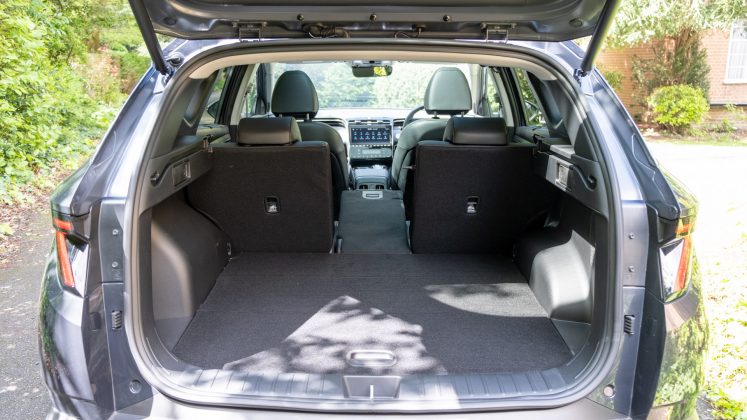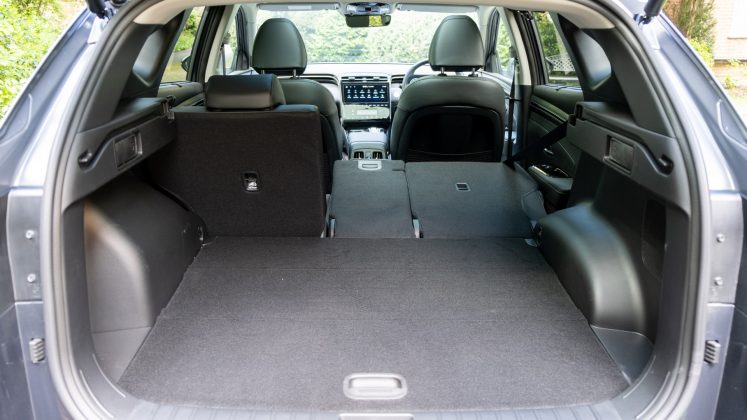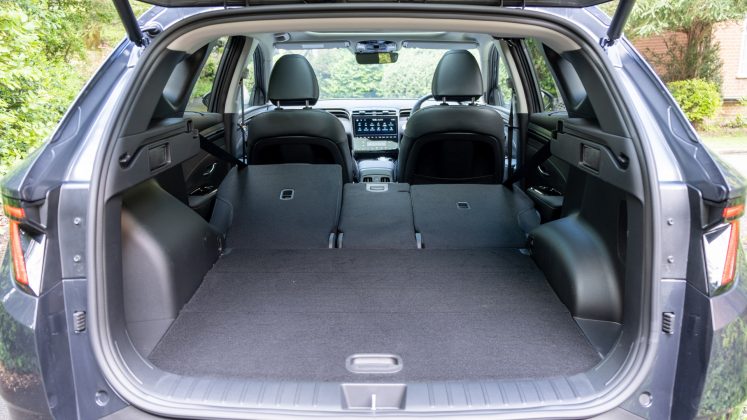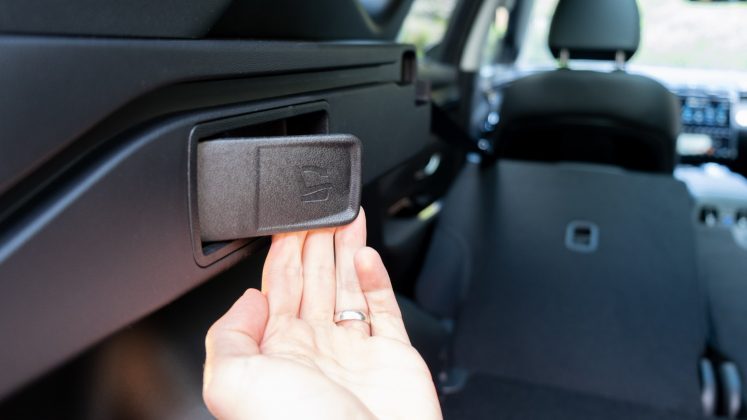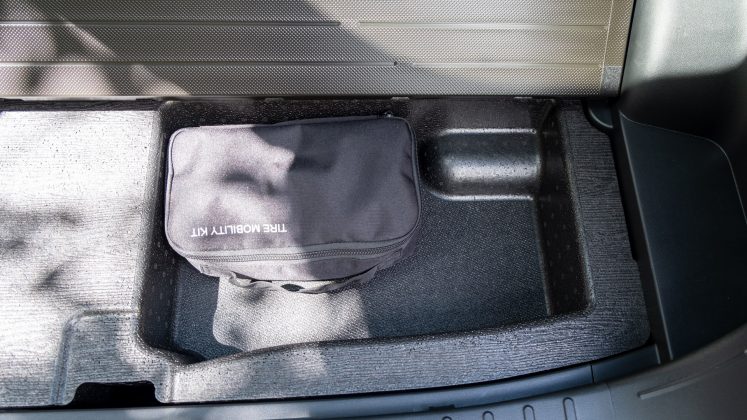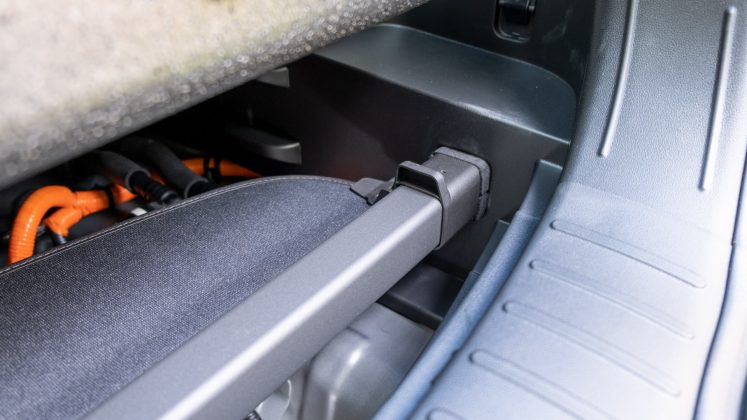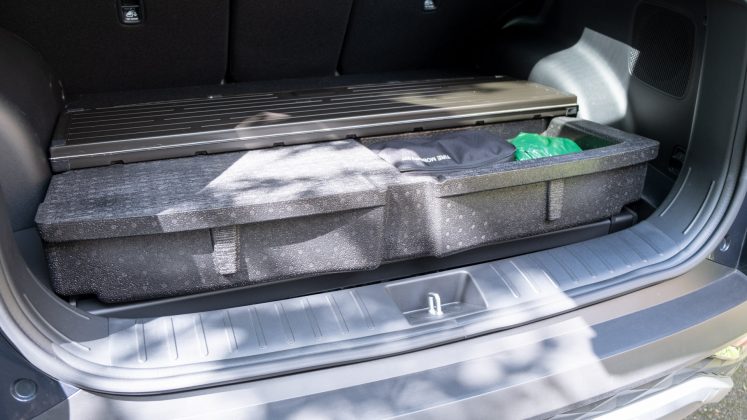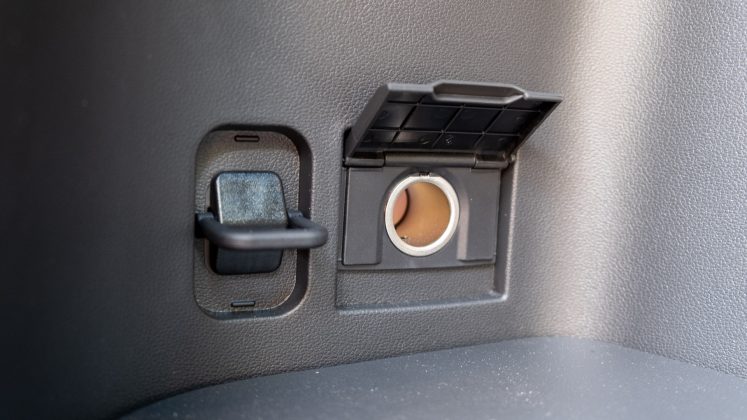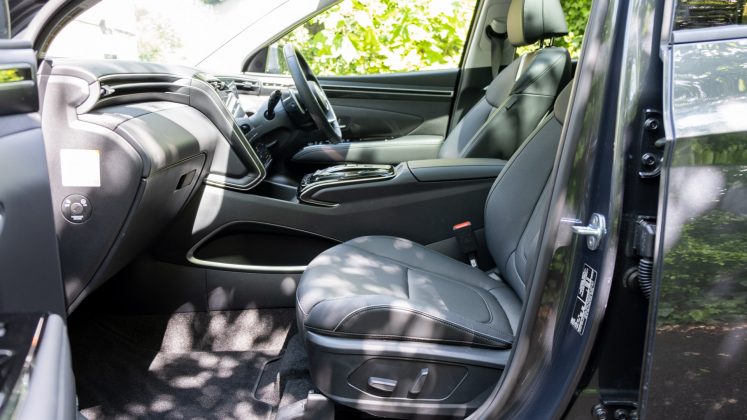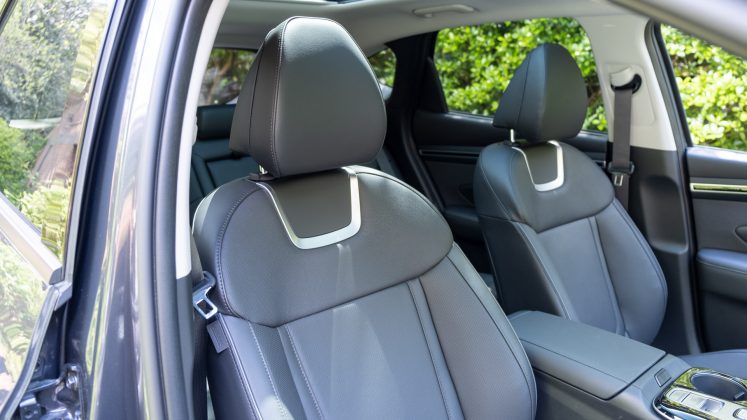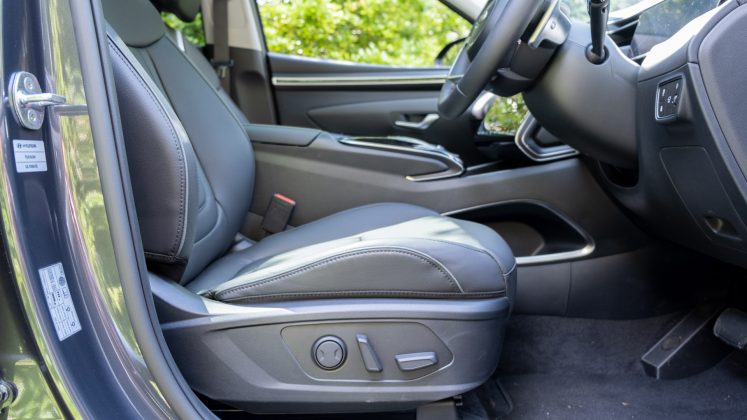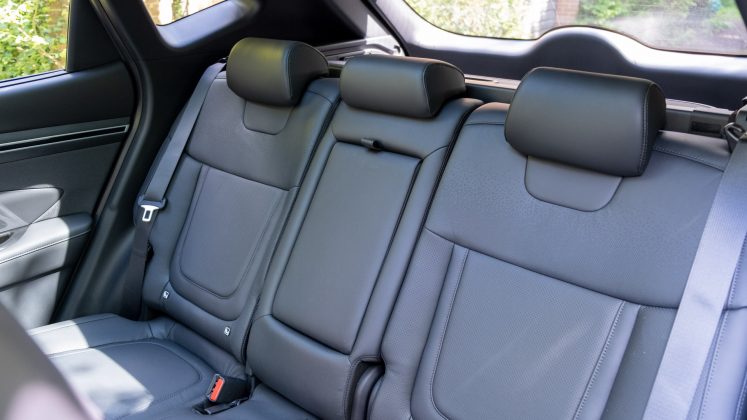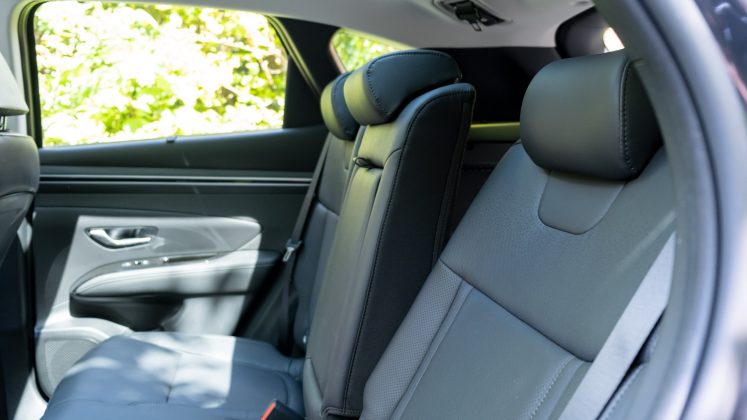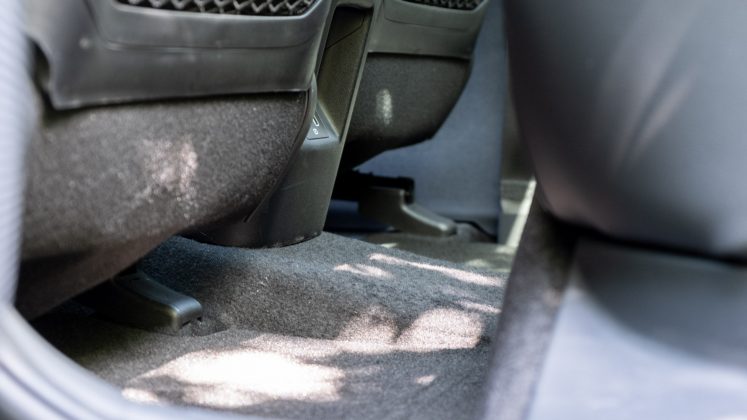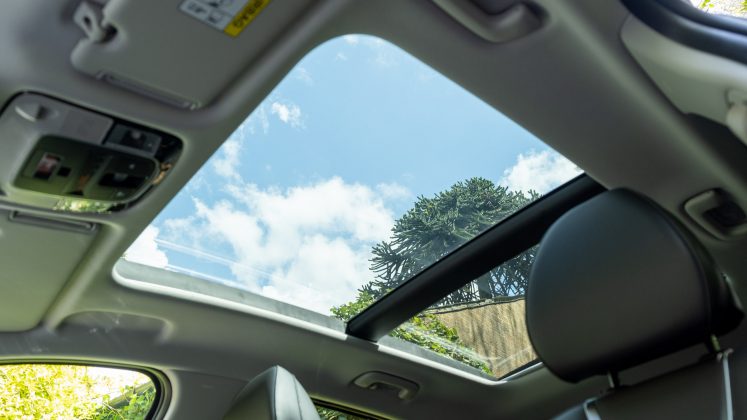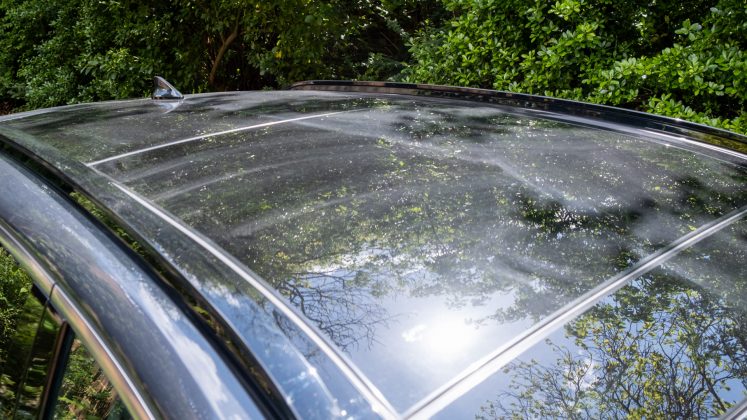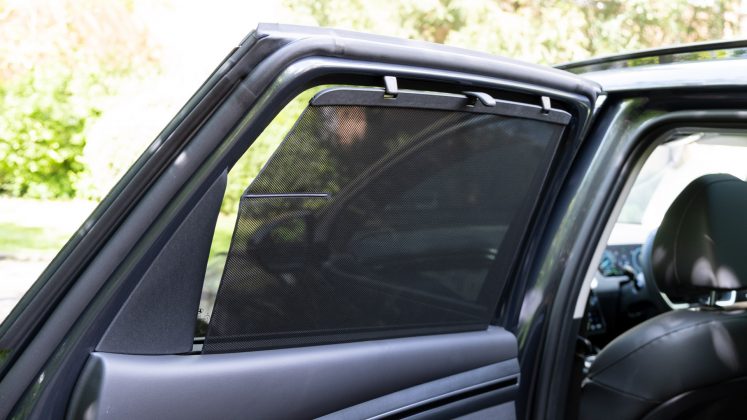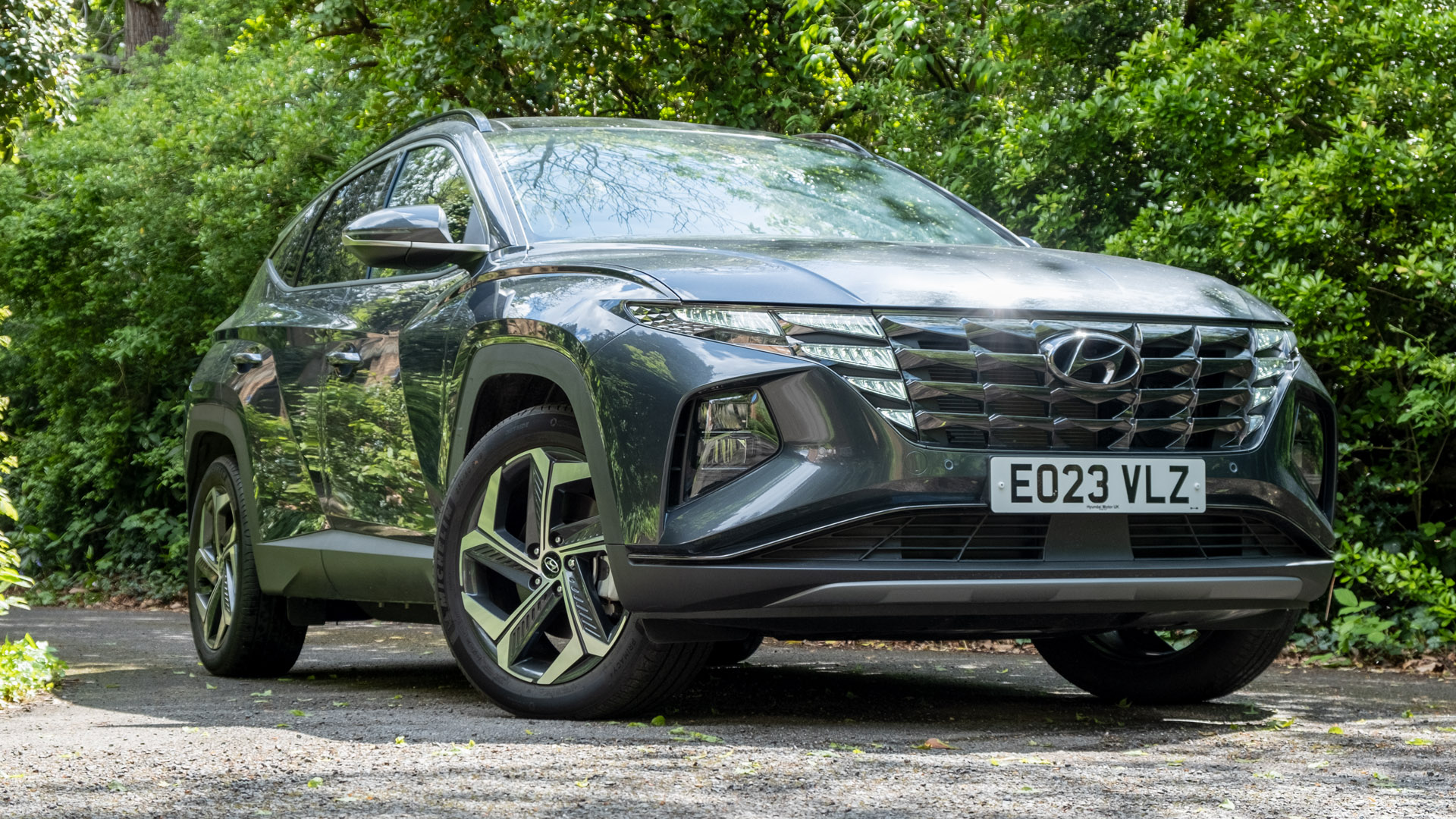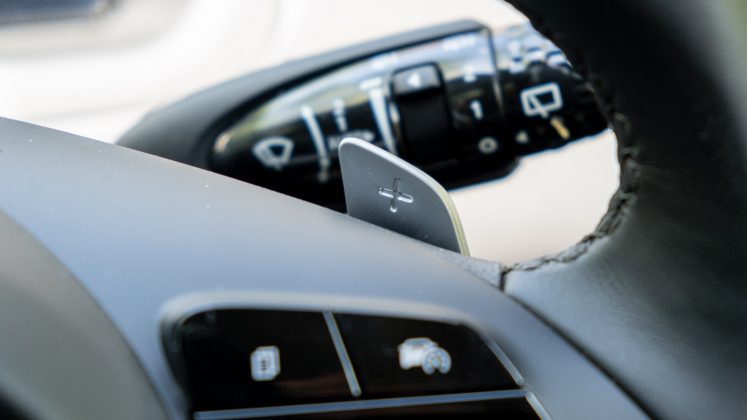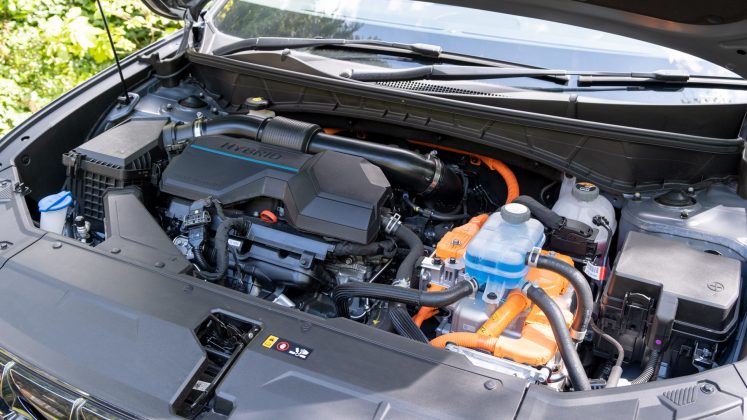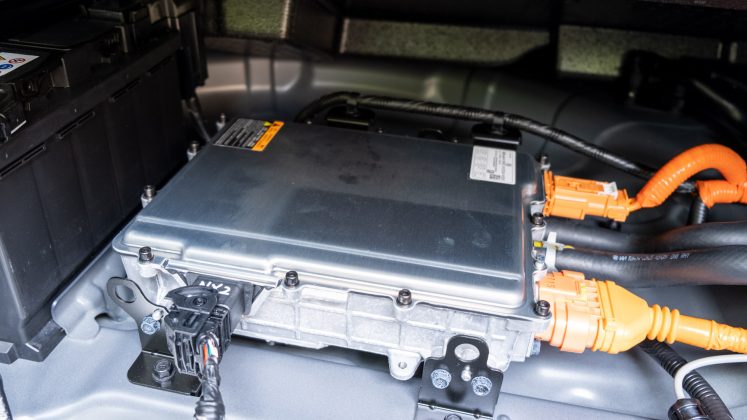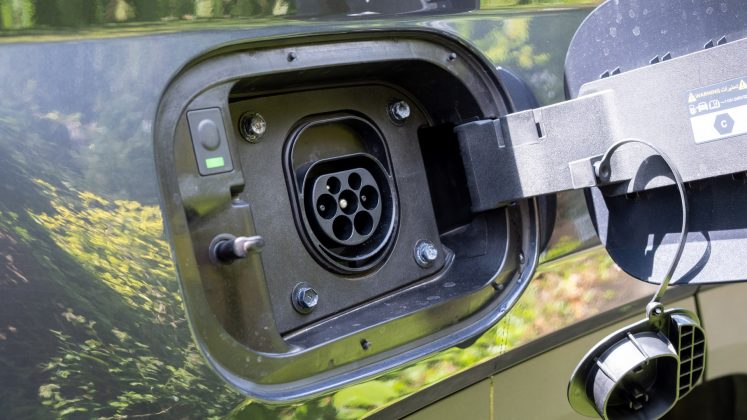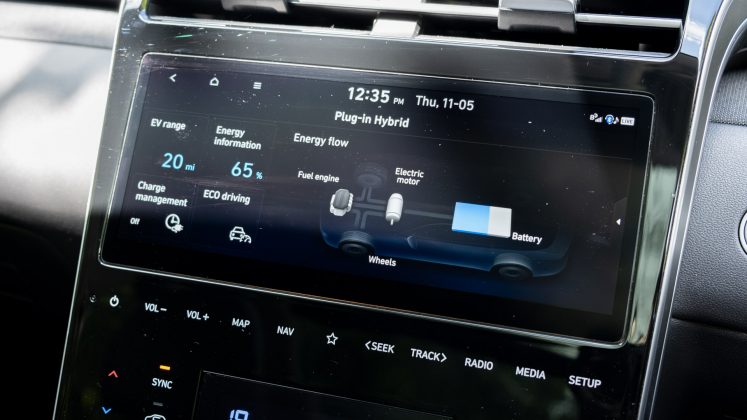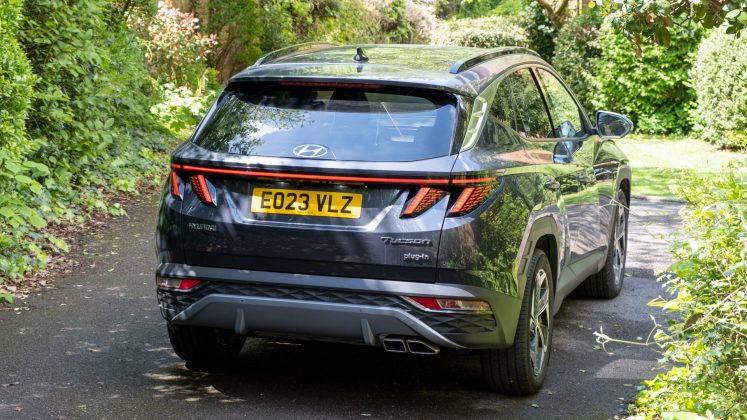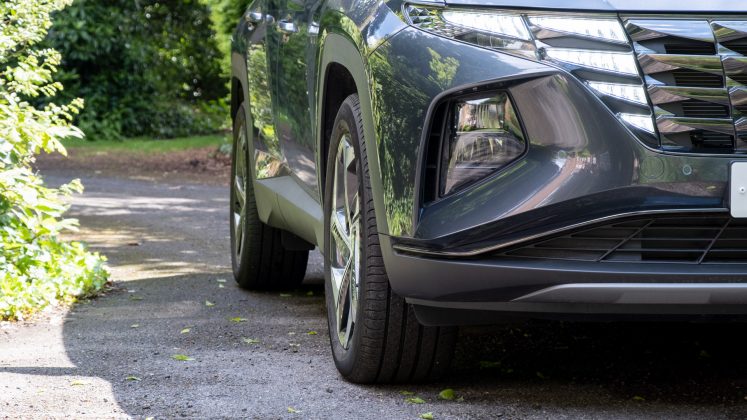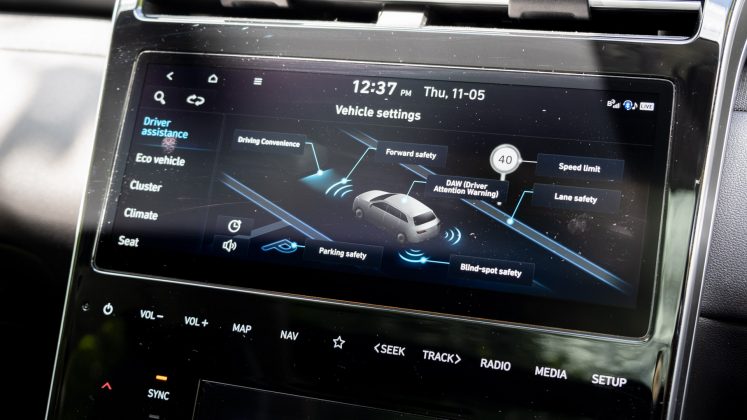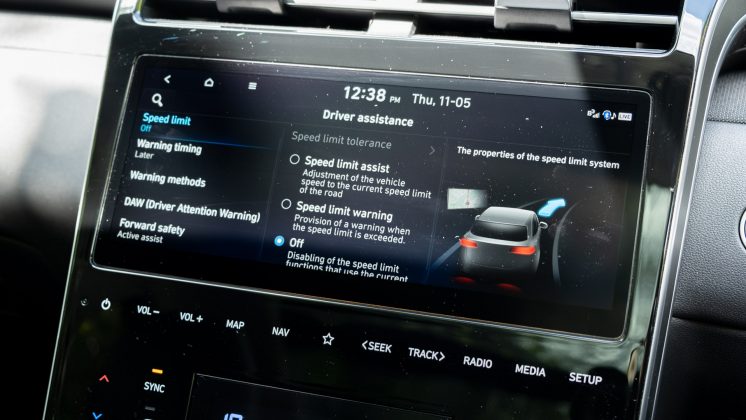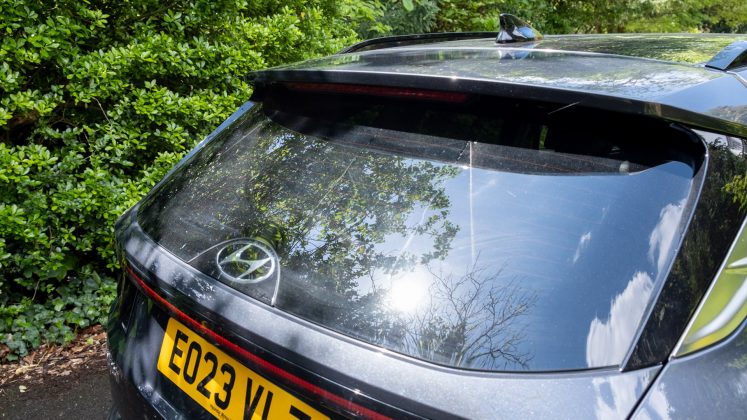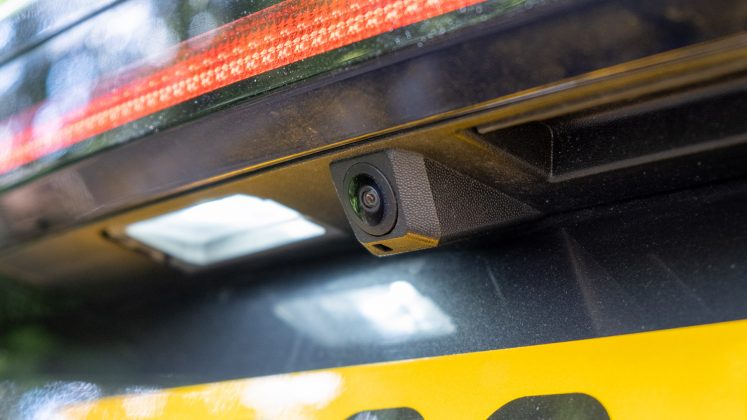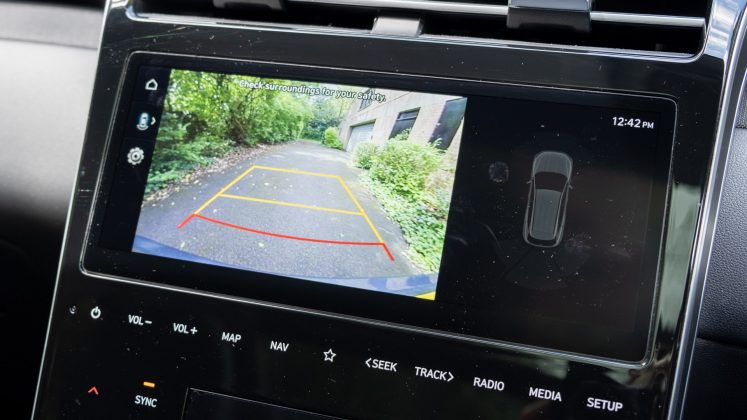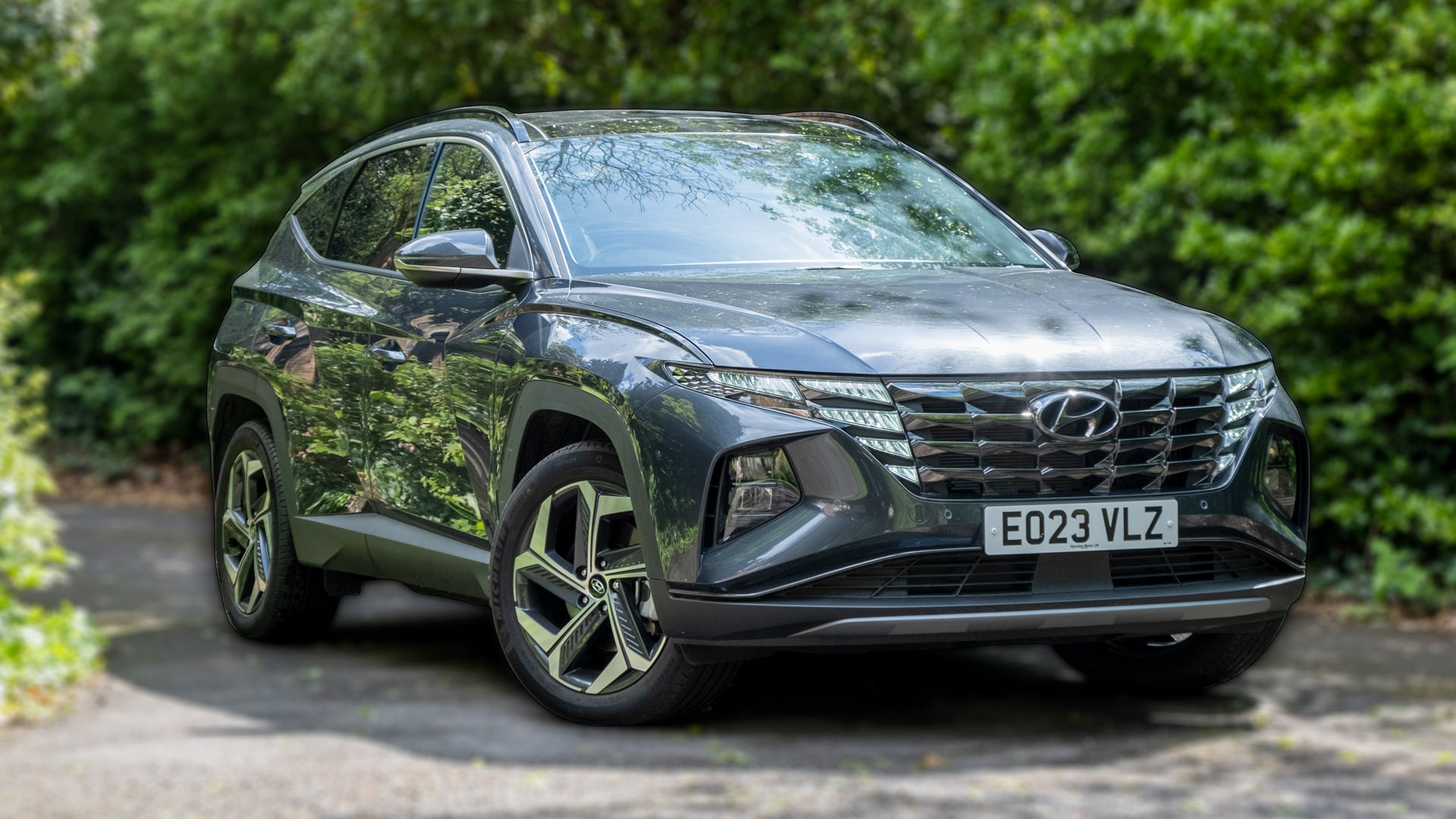Now in its fourth generation, the Tucson, Hyundai’s best-selling SUV, is available in a variety of configurations, including a plug-in hybrid that boasts the most powerful powertrain and delivers up to 38 miles of pure electric range on the WLTP test cycle.
The question is: should you invest more on the PHEV model or opt for the hybrid, mild hybrid or regular petrol model?
If you’d prefer to watch a review of the Hyundai Tucson, head on over to our YouTube channel.
Hyundai Tucson price & competition
At the time of writing and in the UK, there are a multitude of trims to choose from: the SE Connect, Premium, N Line, N Line S, Ultimate and Ultimate + Tech Pack. The regular petrol model starts from the SE Connect at £30,200, while the Hybrid variant costs £34,640. The plug-in hybrid, however, starts from the Premium trim at £40,930 – indeed, there’s a £4,440 to the hybrid model and a further £6,290 to the entry-level PHEV.
If we are to compare the same ‘Premium’ trim between the powertrain models, there’s a £4,940 difference between the petrol and hybrid models, and another £4,090 jump to the equivalent PHEV. With that said, the Hybrid model is more powerful than the regular petrol and mild hybrid models, while the PHEV variant is a smidge faster than the latter but also has a 4WD configuration. A breakdown of the differences can be found below (click to expand):
Find the best Hyundai Tucson deals
As for the competition, there are quite a few hybrid SUVs to consider: Honda HR-V from £29,410; MG HS Plug-in Hybrid from £30,095; Grandland X Hybrid from £32,390; Nissan Qashqai e-Power from £33,670; Citroen C5 Aircross from £34,275; Nissan X-Trail e-Power from £36,140; Citroen C5 X Hybrid from £36,470; Ford Kuga PHEV from £36,555; Peugeot 3008 Hybrid from £37,310; Kia Sportage PHEV from £40,400; Kia Sorento Plug-in Hybrid from £45,245; Audi Q3 TFSIe from £38,335; DS 7 Crossback E-Tense 4×4 from £41,550; BMW X3 xDrive30e from £50,600; Audi Q5 TFSIe from £51,015; BMW X5 xDrive45e from £66,415.
Buy a car phone mount on Amazon (Affiliate)
You might also want to consider a few of the fully electric alternatives: the MG ZS EV from £29,495; the Citroen e-C4 from £30,995; the Hyundai Kona Electric from £31,325; the Vauxhall Mokka-e from £32,695; the Peugeot e-2008 from £33,700; the Kia Soul EV from £34,995; the Kia Niro EV ‘2 64’ from £36,245; the Volkswagen ID.4 from £37,290; the Skoda Enyaq iV 60 from £38,380; the Hyundai Ioniq 5 from £41,900; and the Kia EV6 from £44,195. You’ve also got the MG5 EV, an all-electric estate that starts from £30,995.
Read next: Volkswagen ID.4 review: Better than the VW ID.3?
Hyundai Tucson exterior review
Given the vast number of hybrids on the market, it can be hard for vehicles to stand out. Thankfully, the SUV has got an eye-catching design, namely with its V-shaped headlight profile. At the side, there are stylish 19” alloys that come fitted as standard across the entire PHEV range, while at the rear it has elegant taillights that elevate its stance on the road.
As for the vehicle’s colour, there are a few variations with a red colour finish that comes as standard and optional paints, which range from £300-665. When it comes to towing, the Tucson has 1,350kg of capacity for braked and 750kg for unbraked trailers. As for its roof, it’s rated at 100kg.
Read next: Cupra Formentor e-Hybrid review: Better than BMW X2?
Hyundai Tucson interior review
Inside, the Hyundai isn’t as premium-looking as some of its rivals, but it still looks the part namely when compared to cheaper alternatives. More importantly, however, it retains a practical design with physical buttons on the steering wheel, and a dedicated area for your climate controls. Unfortunately, it’s not quite perfect as the latter settings are touch-based and lack any sort of haptic feedback; physical controls and dials would have been appreciated.
Just above this area, you’ll find the 10.25” infotainment system, which is extremely responsive, intuitively laid out and provides for plenty of customisation. Both Android Auto and Apple CarPlay are also supported over a wired connection. It’s a shame, however, that in this day and age, there is no support for wireless transmission.
Speaking of which, navigation data from these third-party mobile operating systems is not fed through to the fully digitalised 10.25” instrument cluster; some of its rivals offer said functionality and it makes for a bettered experience while driving, as one doesn’t have to glance towards the centre of the dashboard to check for directions. Nonetheless, the built-in navigation system does work with the driver’s display.
It is slightly surprising not to see a Head-Up Display (HUD) fitted as standard in the more expensive trim levels or at the very least, available as an option to consumers who would want to see it included.
As for the vehicle’s audio system, there are six speakers in the SE Connect and N Line, while in the Premium, N Line S, Ultimate and Ultimate + Tech Pack you’ll find a nine-speaker (eight, plus a subwoofer) Krell system instead. If you’d like to hear how the latter system performs, watch our detailed review on YouTube.
Hyundai Tucson storage review
When it comes to storage, the Tucson offers plenty of space within the cabin. At the front, you’ll find a pretty sizeable glove box and big door bins that’ll accommodate a 500ml bottle alongside a few valuables. As for the centre console, on either side there are cut-outs making it perfect to store your glasses or a smartphone, at the top of it there’s a non-slip area with Qi wireless charging bay that comes fitted as standard across the entire trim range, while next to it you’ll also find two USB Type-A ports and a 12V socket. Further down, there are two cupholders and a small area underneath the centre armrest.
As for the rear of the centre console, there are two USB Type-A ports for charging. As for the doors bins, they’ll accommodate a 500ml bottle only, while the pulldown armrest reveals two cupholders.
As for the boot, there’s 558 litres in the PHEV model, which is down from 616 litres from the regular hybrid. With the seats dropped, this figure extends up to 1,737 and 1,799 litres, respectively. Granted the PHEV model has less storage than its sibling, but it’s still plentiful.
Here’s how the it stacks up to other electrified SUVs: Land Rover Discovery Sport P300e (1,179/1,794 litres); Tesla Model Y (854/2,100 litres); Skoda Enyaq iV (585/1,710 litres); VW Passat Estate GTE (483/1,613 litres); VW ID.4 (543/1,575 litres); Hyundai Ioniq 5 (520/1,587 litres); Skoda Octavia iV Estate (490/1,555 litres); Citroen C5 X Hybrid (485/1,580 litres); Citroen C5 Aircross (460/1,510 litres); Nissan X-Trail (485-575/1,298-1,396 litres); Kia EV6 (490/1,300 litres); MG ZS EV (448/1,375 litres); Peugeot e-2008 (434/1,467 litres); Range Rover Evoque P300e (591/1,383 litres); Kia Soul EV (315/1,339 litres); Cupra Formentor e-Hybrid (345/1,475 litres); Citroen e-C4 (380/1,250 litres); BMW X2 xDrive 25e (410/1,290 litres); Nissan Juke Hybrid (354/1,237 litres); Honda HR-V (320/1,290 litres); Hyundai Kona Electric (332/1,114 litres); Vauxhall Mokka-e (310/1,060 litres). As for the MG5 EV estate, it offers 479 and 1,367 litres, respectively.
In terms of practicality, the Tucson has 40:20:40 rear-split folding seats with an integrated ski latch fitted as standard. Better still, the seats can be conveniently dropped down via the release latch found in the boot, making it easy to load luggage.
Equally in the N Line S and Ultimate trims, you’ll find an electronically-operated tailgate; it is a shame that there is a loud audible sound when it’s being operated. Nonetheless, Hyundai’s SUV has a wide-opening hatchback design, a flat loading bay, a small underfloor compartment, and a retractable and removable boot load cover. The latter doesn’t quite fit in the underfloor area, as the polystyrene tray doesn’t accommodate the elongated object; it would seem that in the non-PHEV model, it should be plausible as there’s a cut-out for the boot load cover.
Read next: Skoda Enyaq iV review: The Volkswagen ID.4 alternative
Hyundai Tucson comfort review
While the boot of the PHEV model is a little smaller than its sibling, seating comfort hasn’t been compromised in the slightest. Both headroom and legroom at the front and rear of the cabin are excellent with even 6-foot 2-inches (188cm) individuals able to be sat without any issues.
To expand, the transmission tunnel has been kept down to a minimum, meaning the rear middle occupant can place their feet down comfortably on longer journeys. Speaking of which, the rear seats can also recline – bettering the overall experience.
Find the best Hyundai Tucson deals
At the front of the cabin, there are manually adjustable front seats with the driver’s seat also featuring electric lumbar support. Both front seats are heated as standard. In the Ultimate trim, you’ll find electronically adjustable and ventilated front seats with a driver’s memory function.
In the top-spec trim, you’ll also get heated rear outer seats. However, if you want a heated steering wheel, this comes featured in the N Line S, Premium and Ultimate trims. As for the sunroof, the N Line S has a fixed glass roof, while the Ultimate model has tilt and slide functionalities too.
As for cabin noise, the Tucson is surprisingly well-insulated. The vehicle soaks up a considerable amount of noise at lower speeds and does a valiant job while traversing on the motorway.
Hyundai Tucson performance review
Unfortunately, such praise can’t be said about the vehicle’s suspension system, which feels a little unsettled on longer drives; from our tests, we found that the Tucson suffered from vibrations, which could be felt through the steering wheel and the front seats. In ways, it felt as if it had wheel-balancing problems. While this could be the case, it was also noted at lower speeds, which leads us to believe it wasn’t an isolated issue.
Nonetheless, it’s still comfortable to drive due to its softened setup; potholes and speed bumps are soaked up to a certain degree, which makes for a more pleasurable drive over sportier alternatives. However, when compared to the Cupra Formentor e-Hybrid and BMW X2 xDrive 25e, the Hyundai does suffer from a bit of body roll when driven at speed on winding country roads and lacks that one-to-one driver’s feel.
Note, with the addition of the £1,500 Tech Pack option, which is solely available in the Ultimate trim, you can add an Electronic Control Suspension (ECS) system – this should better the experience but wasn’t fitted in our tested vehicle. Even so, it’s hard to imagine the ECS system competing with the ‘Progressive Hydraulic Cushion’ system that is found on the Citroen C5 X Hybrid and Citroen C5 Aircross Hybrid, which both provide a floaty-like experience.
While that’s not overly surprising for a vehicle of its target market, it is disappointing that its six-speed automatic transmission is sloppy. Gear shifts initiated via the flappy paddles found behind the steering wheel take more time than they should; even in its Sport mode preset, the Tucson lacks that responsiveness.
With that said, it is by no means a slouch when power is required. Using Racelogic’s Performance Box Touch, we had it tested from 0-20mph in 1.88s, 0-30mph in 2.9s, 0-60mph in 7.53s and from 50-70mph in just 3.7s. Top speed is capped at 119mph. Indeed, its front-mounted 1.6-litre turbocharged four-cylinder engine combines with the 66.9 kW electric motor to output 195 kW (261 hp) of power and 350 Nm of torque; in fact, when driven in EV mode, one still has 304 Nm of torque.
Buy a car phone mount on Amazon (Affiliate)
On the subject of electrification, its 13.8 kWh battery provides around 25 miles of range, which is below the manufacturer’s 38-mile claim. While its range is a tad disappointing, the Tucson’s battery almost never runs out of juice when driven in Hybrid mode as it recoups energy via regenerative braking and is also recharged by the petrol engine – the latter being quite a rare sight for a plug-in hybrid. Should you completely run out of charge, the vehicle’s 7.2 kW onboard charger allows you to plug it into a single-phase wallbox and go from 0-100% charge in 1hr 42mins. A 3-pin plug will take you 6hrs 30mins, instead.
While it’s great to see such versatility from the manufacturer, all this clever trickery doesn’t aid the Tucson’s fuel efficiency. In our mixed driving tests, which involve motorway, country road and city driving, we netted 42.7 MPG. This figure drops just south of 40 MPG if you’re going to be frequenting the motorway and thus not benefiting from the vehicle’s electric range.
To put this figure into perspective, the Citroen C5 X Hybrid attained 74.2 MPG, the Cupra Formentor e-Hybrid 64 MPG, the VW Passat Estate GTE 60-65 MPG, the Citroen C5 Aircross Hybrid 58 MPG, the Skoda Octavia iV Estate, Honda HR-V, and Honda Civic 55 MPG, the Vauxhall Astra Hybrid 53.8 MPG, the Honda Jazz 51 MPG, the Nissan X-Trail 42.6 MPG, the Range Rover Evoque P300e 40 MPG, the BMW X2 xDrive 25e 39 MPG, the Nissan Juke Hybrid 35-40 MPG, the Jeep Renegade 4xe attained 36 MPG and the Land Rover Discovery Sport P300e a measly 35 MPG.
Indeed, the Tucson sits towards the bottom half of the tested hybrids, which means if you want to better fuel efficiency you might want to consider the other alternatives. Equally, you might want to look at the non-PHEV variant of the Tucson; as the regular hybrid is not only cheaper but should also net a similar figure on longer-distance drives. Undoubtedly, should you be able to plug in regularly and do shorter commutes, the PHEV model would be the better pick.
One thing that does stand out over some of its rivals and over the regular hybrid, is that the Tucson PHEV and the more powerful mild-hybrid models operate on a four-wheel drive (4WD) system as opposed to a front-wheel drive (FWD) configuration. A small detail to consider if it’s an important feature for you in a plug-in hybrid.
As for total driving range, on a full tank of petrol, you should be able to attain around 350 miles from its 42-litre tank; down from 54 litres from the mild hybrid and 52 litres from the regular hybrid. Of course, this is dependent on how and where you drive, so expect a bit of variation.
Read next: Citroen C5 X review: Hybrid perfection?
Hyundai Tucson safety review
When it comes to crash safety, the Tucson received a full 5/5 stars by Euro NCAP. It scored 86% in Adult Occupancy, 87% in Child Occupancy and 70% in the Safety Assist tests.
As for the driver assistance systems, you get the following as standard: Driver Attention Warning (DAW), Emergency Stop Signal (ESS), Multi Collision Braking (MCA), Forward Collision Avoidance Assist (FCA) – Car, Pedestrian, Cycle, Intelligent Speed Limit Assist (ISLA), Lane Follow Assist (LFA), Manual Speed Limit Assist (MSLA), Cruise Control, and Lane Keep Assist (LKA). It’s great to see that the latter system can be disabled on-the-fly by long-pressing a button on the steering wheel; LKA gets re-enabled each time you power on the vehicle.
In the N Line S and Ultimate, you’ll also find Forward Collision Avoidance Assist Junction Turning (FCA-JT), while in the Premium, N Line S and Ultimate trims you get Smart Cruise Control (SCC) with Stop and Go Function and Blind Spot Collision Warning (BCW). SCC works well on the motorway and keeps you at a safe distance from the leading vehicle – it’s not jerky and provides for a stress-free motorway driving experience.
Speaking of which, the top-spec Ultimate trim also adds Highway Drive Assist (HDA), which is an even smarter system that works on the motorway by providing steering support. Yet again, it’s an excellent addition by the manufacturer as it further bolsters the safety of the Tucson.
Should you want to take things one step further with the Ultimate trim, you might want to consider splashing out an extra £1,500 on the Tech Pack as it adds Blind Spot View Monitor (BVM). This integrates the side view cameras straight into the instrument cluster, allowing you to check your surroundings with ease.
The Tech Pack also brings Remote Smart Park Assist (RSPA) and Parking Collision Avoidance Assist (PCA). If you’re not fussed about the aforementioned systems, you will be pleased to know that Safe Exit Warning and Rear Cross Traffic Collision Warning (RCCW) both come fitted as standard in the Premium, N Line S and Ultimate trims.
In terms of parking, rear sensors and a camera come fitted as standard across the entire trim range, while front sensors are also integrated in all but the entry-level SE Connect – thus, standard in all PHEV models. As for manoeuvrability, it’s excellent with a 10.9-metre turning circle and excellent visibility at the front and side. It’s not too bad at the rear either, however, the top-mounted rear wiper only manages to clean a small portion of the window.
Read next: New Honda HR-V review: Best hybrid SUV?
TotallyEV’s verdict on the Hyundai Tucson
The Hyundai Tucson is the manufacturer’s most popular SUV, and for good reason. It ticks a lot of boxes, with great practicality and an eye-catching exterior design. However, the plug-in hybrid fails to really hit the mark with lacklustre efficiency over the regular hybrid model.
Find the best Hyundai Tucson deals
Outside of Hyundai’s fleet, it’s trumped by the Citroen C5 X Hybrid and Citroen C5 Aircross Hybrid when it comes to comfort, beaten by the Cupra Formentor e-Hybrid and BMW X2 xDrive 25e in the overall driver’s feel, and can’t quite match the Honda HR-V nor the Nissan X-Trail in affordability or versatility.
Given the above, would you still pick the Tucson PHEV over its rivals? Let us know in the comments section below or via social media; we’re on: YouTube, Instagram, Facebook, Twitter and LinkedIn.

